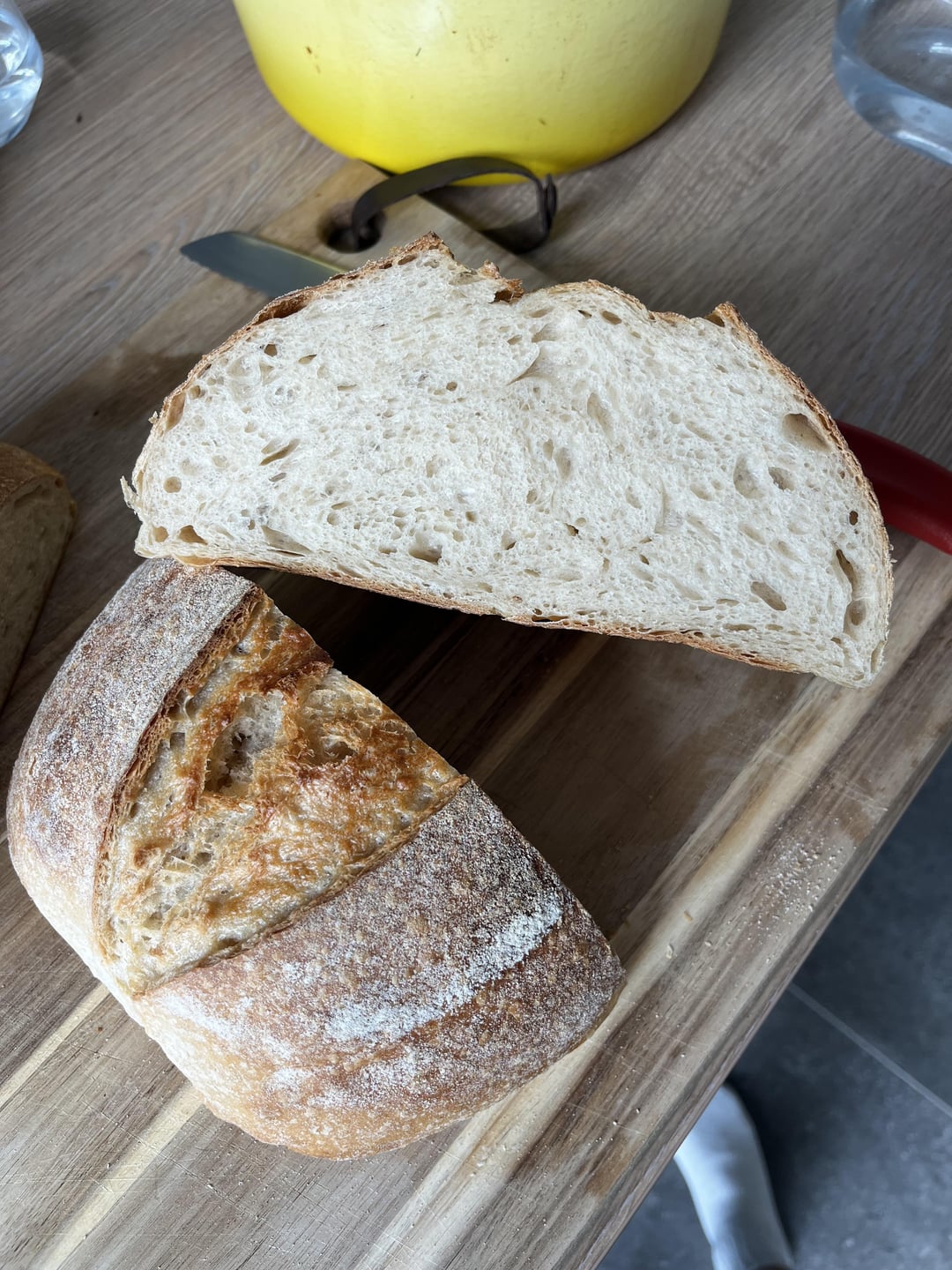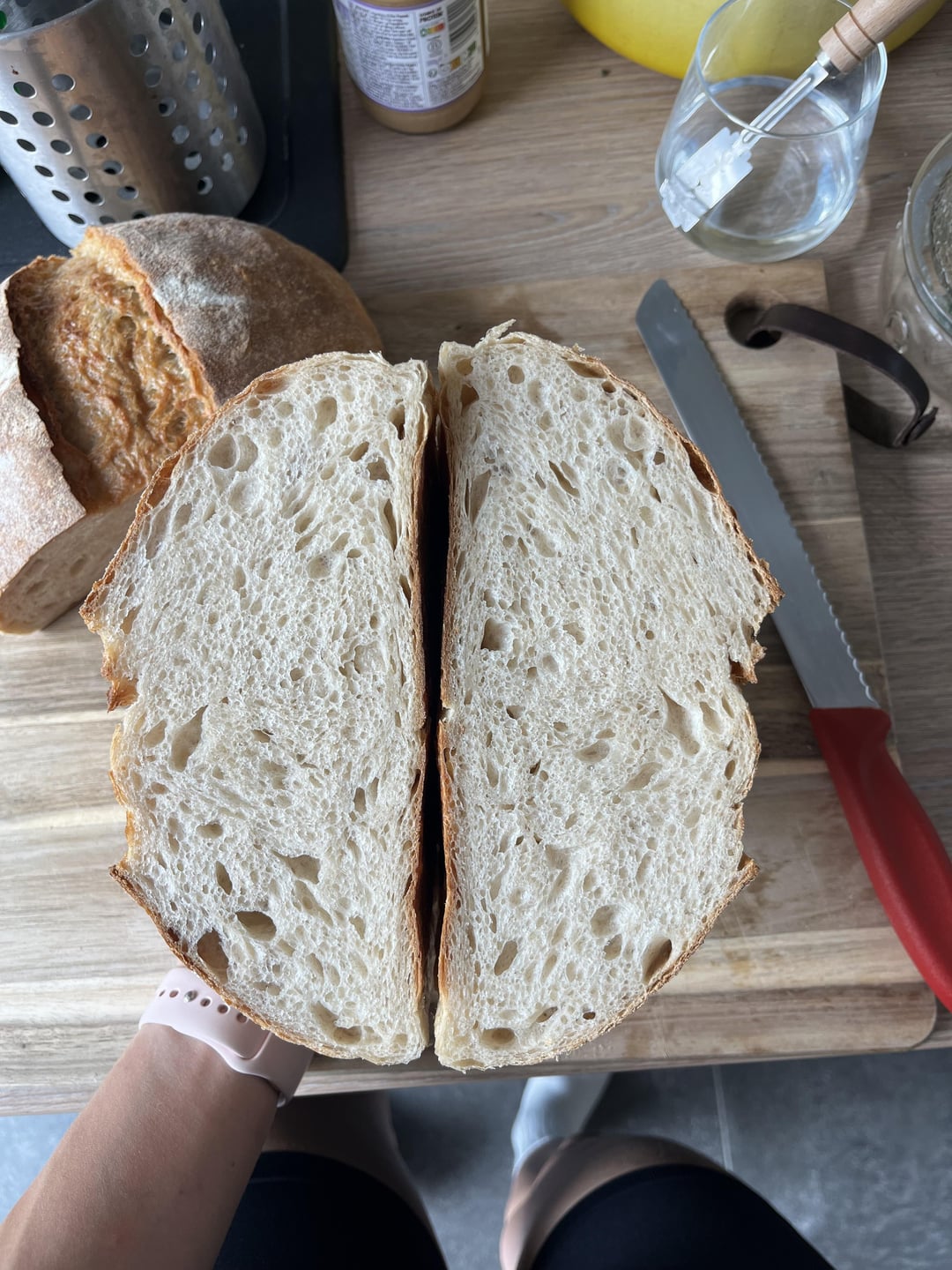

Gluten development is so important for a good rise. Instead of a “shaggy dough” I mix until smooth and stretchy. You can use a mixer, or do it by hand (Rebaud method).
Use the same hydration percentage for your starter as you use for your dough. I use 66% hydration. I don’t know the exact science behind it bit my loaves are coming out better since I started doing this.
Ignore timing in recipes. Learn how to read your dough instead.
The Aliquot method works. I use the chart on https://thesourdoughjourney.com/the-ultimate-sourdough-bulk-fermentation-guide/. Pay more attention to the % rise than to the time indications.
Whole wheat flour gives you a tighter crumb, and that’s okay.
A happy starter = good and fast fermentation. Use it regularly or revive it with a couple of feedings after it’s been in the fridge for a long time.
Even bread that doesn’t turn out perfect visually can still taste great.
Enjoy the process. It can be frustrating at times, but every mistake you make is a portal towards improvement. Make an adjustment and try again; the more rewarding it is when you get it right.
Recipe for loaf shown:
Ingredients:
- 391g type 0 organic Italian bread flour (12% protein)
- 9g gluten powder
- 100g starter (66% hydration, 50% rye flour)
- 264g water
- 25g butter
- 20g sugar
- 6g salt
Method:
• mix starter, water and flour and work the dough until smooth and stretchy (medium window pane).
• fermentolyse 45 min
• mix in butter, sugar and salt. Do some more Rebaud-method gliten development
• 4 stretch & folds, 30 min apart
• bulk ferment until jiggly, bubbles on top and pulling apart from the bowl easily.
• preshape
• 20 min nap on the counter
• final shape
• cold proof +- 4 hours
• preheat Dutch oven at 245C for at least 45 min
• bake 7 min at 245C covered, 2 ice cubes
• remove from the oven and score.
• back in the oven, covered with 2 new ice cubes for 20 more minutes.
• lower temperature to 210C, remove lid and bake until golden (for me this took 17min).
by Hungry_Bag8758


4 Comments
Thanks for sharing your wisdom. Can you explain what 66% hydration means for a starter? I have only heard of hydration referring to the dough itself.
There is no need to reduce your starter hydration or use a stand mixer. I use 100% hydration starter for my 80% loaves, start with a shaggy dough (turns to silk after 30 min rest), and never have issues.
Isn’t a 1:1:1 starter 100%?
True but O P is claiming 66%???